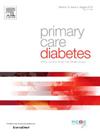在英国萨默塞特使用数字化糖尿病自我管理平台对糖尿病相关健康结果的影响:中断时间序列分析。
IF 2.6
4区 医学
Q3 ENDOCRINOLOGY & METABOLISM
引用次数: 0
摘要
背景:MyWay Diabetes (MWD)数字平台旨在通过个性化访问健康记录、结构化教育和其他自我管理功能来改善糖尿病管理。目的:我们旨在评估合并1型糖尿病(T1DM)和2型糖尿病(T2DM)的MWD使用者使用6年以上的健康结果。方法:对英国萨默塞特(Somerset)患有1型糖尿病或2型糖尿病的MWD患者进行中断时间序列分析,比较MWD前后登记趋势,以估计健康结局(HbA1c、血压、血脂、BMI、体重)的差异。广义估计方程模型调整了参与者基线特征并确定了重要的预测因子。结果:共纳入7207人(T1DM: n = 750(女性52.3 %,平均年龄51.2 (SD15.8)), T2DM: n = 6457(男性58.1 %,平均年龄64.7 (SD12.0)))。研究显示,在mwd登记前后,T2DM患者的一些健康结果显著改善。在MWD登记后24个月,HbA1c降低了8.6 mmol/mol,在年轻、糖尿病持续时间较短和频繁使用MWD的用户中观察到最大的改善。T1DM的所有健康结果没有变化。结论:T2DM患者HbA1c的大幅降低对于可扩展的数字化自我管理干预是值得注意的,并为数字化糖尿病自我管理干预提供了证据基础。本文章由计算机程序翻译,如有差异,请以英文原文为准。
Impact on diabetes-related health outcomes using a digitally-enabled diabetes self-management platform in Somerset, UK: An interrupted time-series analysis
Background
The MyWay Diabetes (MWD) digital platform aims to improve diabetes management through personalised access to health records, structured education, and other self-management features.
Purpose
We aimed to assess health outcomes in MWD users with type 1 diabetes (T1DM) and type 2 diabetes (T2DM) over 6 years of use.
Methods
An interrupted time-series analysis in MWD users with T1DM or T2DM in Somerset, UK, compared pre- and post-MWD registration trends to estimate differences in health outcomes (HbA1c, blood pressure, lipids, BMI, weight). Generalised estimating equations modelling adjusted for participant baseline characteristics and identified significant predictors.
Results
A total of 7207 people (T1DM: n = 750 (52.3 % female, mean age 51.2 (SD15.8)), T2DM: n = 6457 (58.1 % male, mean age 64.7 (SD12.0))) were included in the analysis. The study showed some health outcomes improved significantly for T2DM between pre- and post-MWD registration. HbA1c reduced by 8.6 mmol/mol at 24 months post-MWD registration, with greatest improvements observed in users who were younger, had shorter diabetes durations and who were frequent MWD users. All health outcomes for T1DM were unchanged.
Conclusion
The large HbA1c reduction for T2DM is notable for a scalable digitally-enabled self-management intervention and adds to the evidence base for digital interventions for diabetes self-management.
求助全文
通过发布文献求助,成功后即可免费获取论文全文。
去求助
来源期刊

Primary Care Diabetes
ENDOCRINOLOGY & METABOLISM-PRIMARY HEALTH CARE
CiteScore
5.00
自引率
3.40%
发文量
134
审稿时长
47 days
期刊介绍:
The journal publishes original research articles and high quality reviews in the fields of clinical care, diabetes education, nutrition, health services, psychosocial research and epidemiology and other areas as far as is relevant for diabetology in a primary-care setting. The purpose of the journal is to encourage interdisciplinary research and discussion between all those who are involved in primary diabetes care on an international level. The Journal also publishes news and articles concerning the policies and activities of Primary Care Diabetes Europe and reflects the society''s aim of improving the care for people with diabetes mellitus within the primary-care setting.
 求助内容:
求助内容: 应助结果提醒方式:
应助结果提醒方式:


